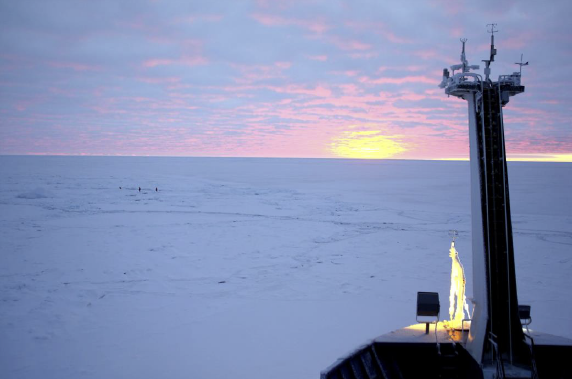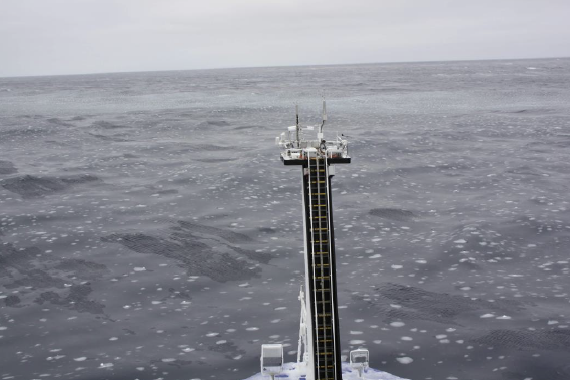By Ola Persson, CIRES/NOAA
We made some good measurements in cold winds blowing off the nearby ice as we moved from the open water to over the more established first-year ice in the Chukchi Sea. This more established first-year ice formed a few weeks ago. We saw the many faces of the Arctic Ocean surface, from open water with waves, to areas with waves and a few pancake ice areas, to more compact pancake ice, and finally into the more established first year ice, which itself is only 4-12 inches thick. When ice first starts forming, they smooth the shortest waves; when the ocean becomes mostly ice covered, there are very few waves left. All of this occurred within about 30 miles near the ice edge, and appeared forced by the cold wind blowing from the ice edge. The temperature difference from the open water to over the ice, even though it was pretty thin, was 20-30 degrees F. In the ice area, it seemed more of a winter landscape than a sea, as the ice had a thin snow cover. But walking on the ice, one has to be careful, because the ice is only a few inches thick in some areas, reminding you that you are still on the sea and that only a few inches of ice protect you from falling into the 4000 feet deep abyss below. We need to better understand processes such as these that melt and freeze the Arctic Ocean every year, as changes in them likely contribute to the changes in the sea ice thickness and extent that have been seen over the past few decades.
In mid-October at this latitude of 74°N, sunrises and sunsets are very prolonged, lasting an hour or more, as seen in the last photo. Unfortunately, the time between them is rapidly shrinking as the autumn goes on, so the research work needs to be done more and more in the dark. Even daytime now becomes a blending of dawn into dusk.

Sunrise near 11 AM ADT on Oct 20 over thin, recently formed first-year ice. Researchers making ice and snow measurements can be seen in the distance at left. Energy flow between the atmosphere and the surface are measured by instruments on the bow mast.

